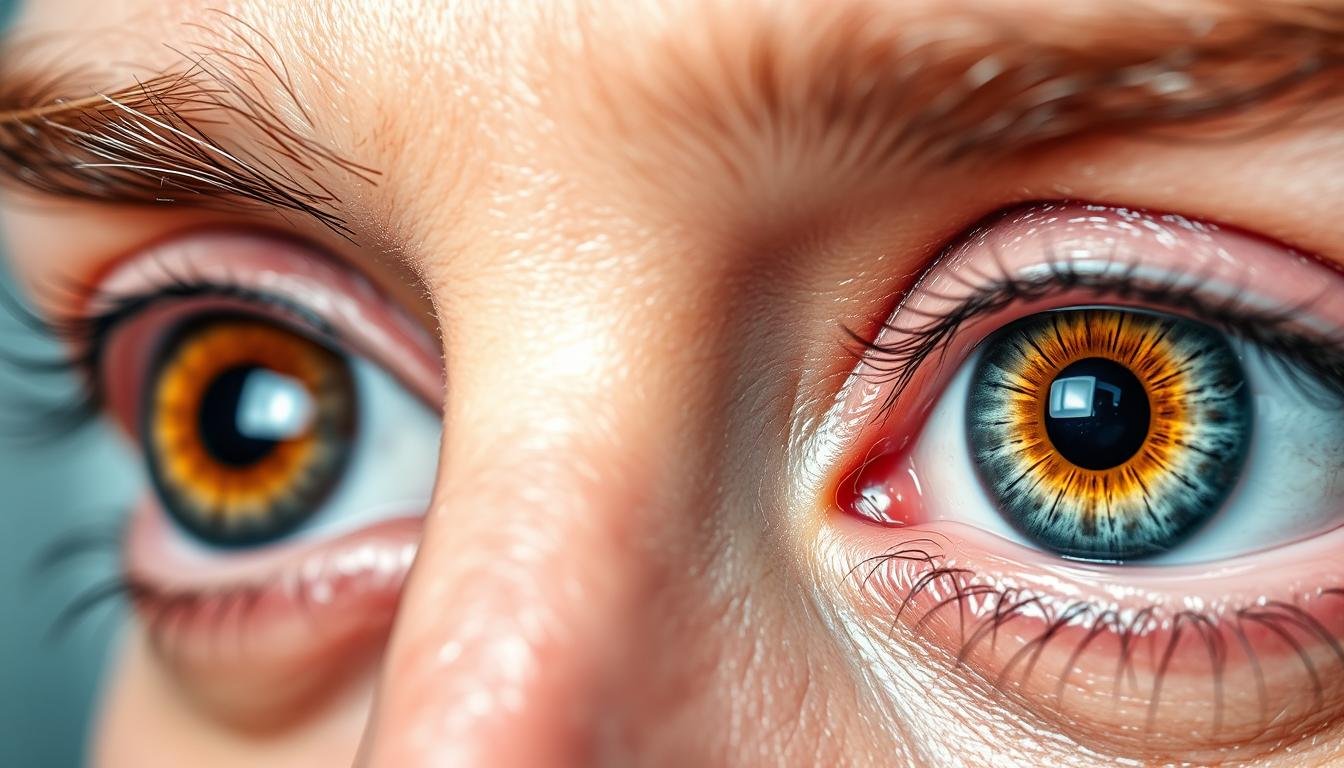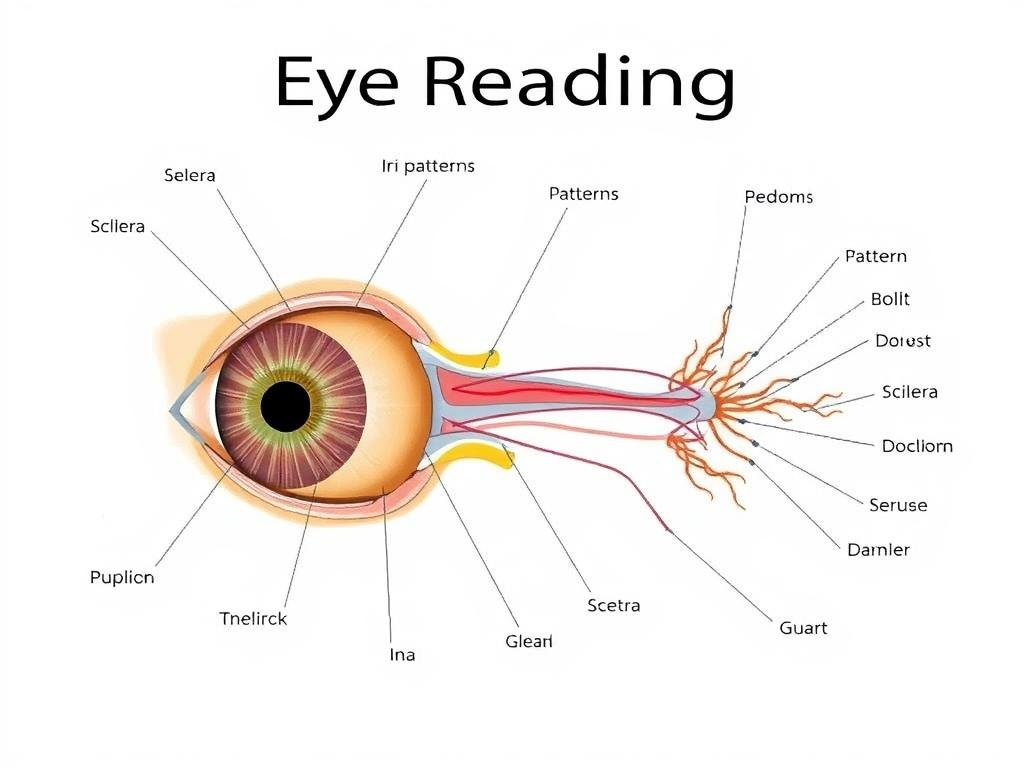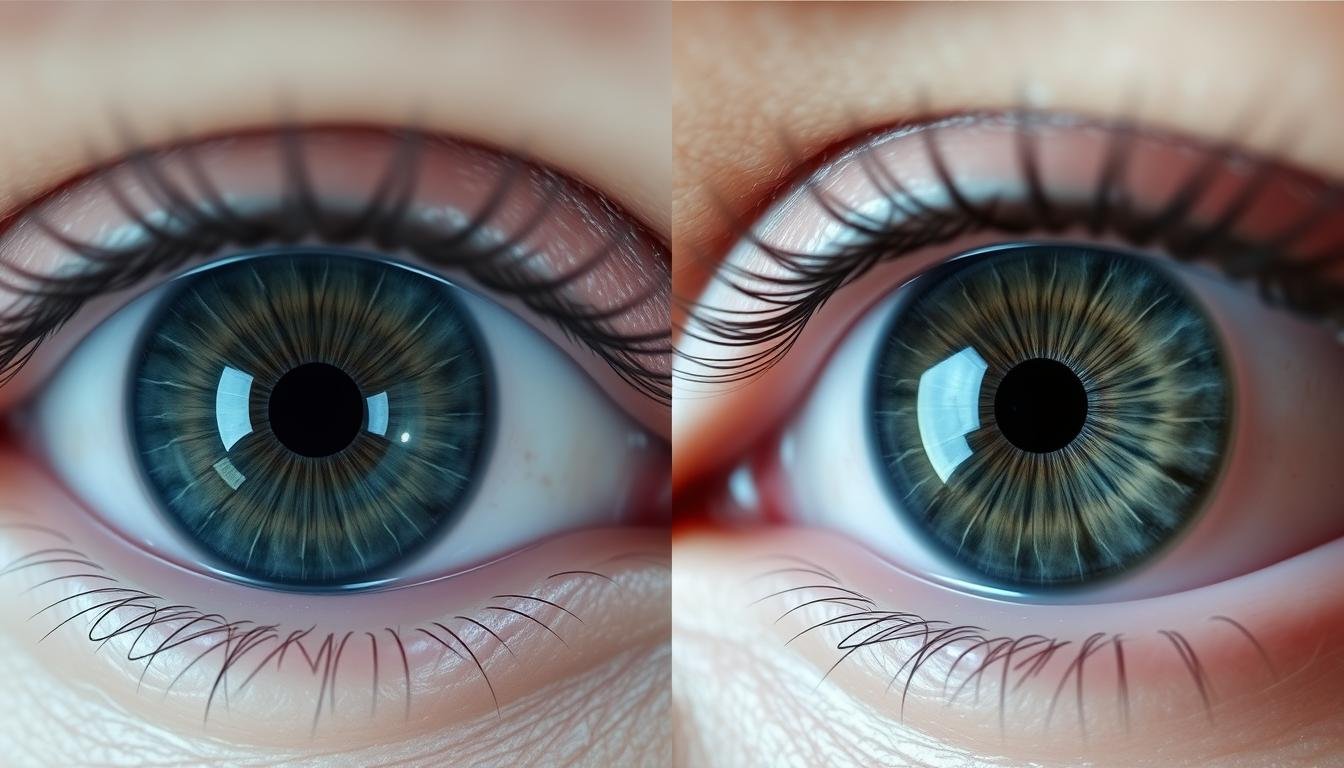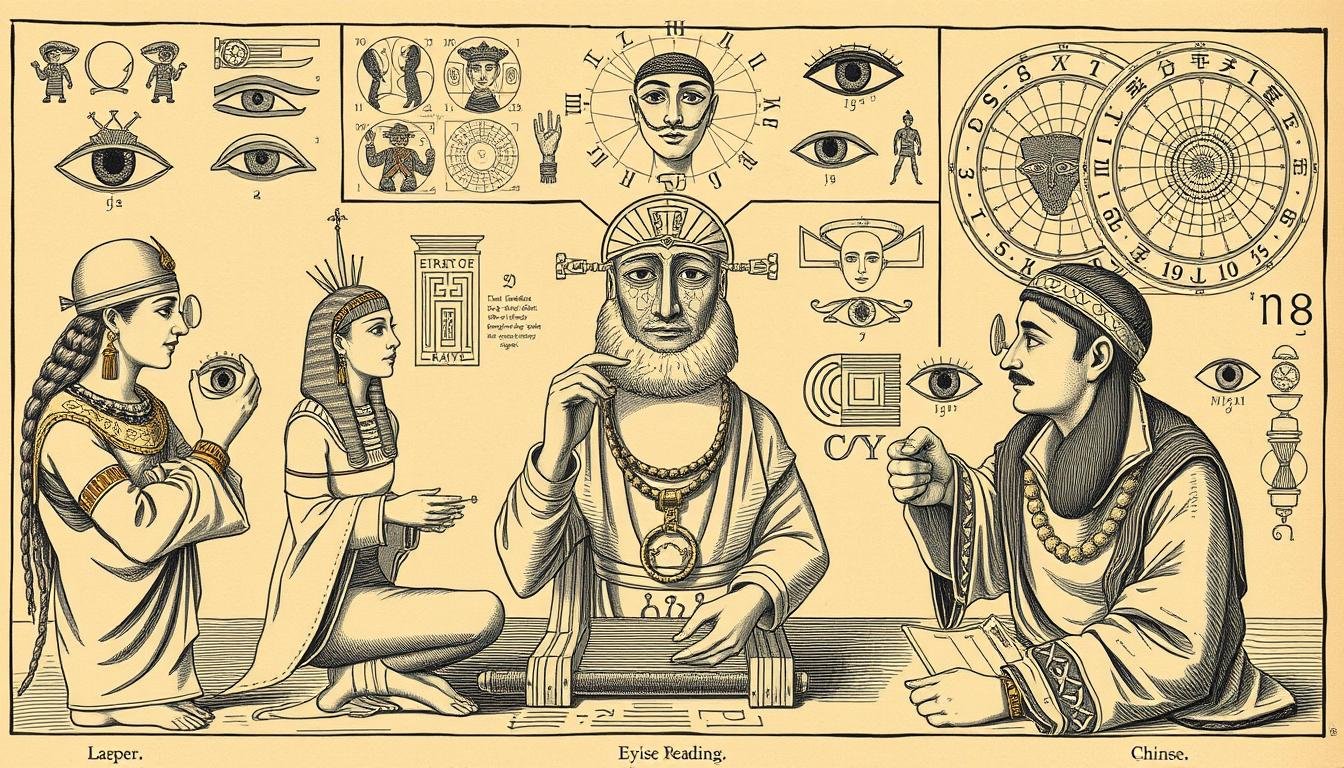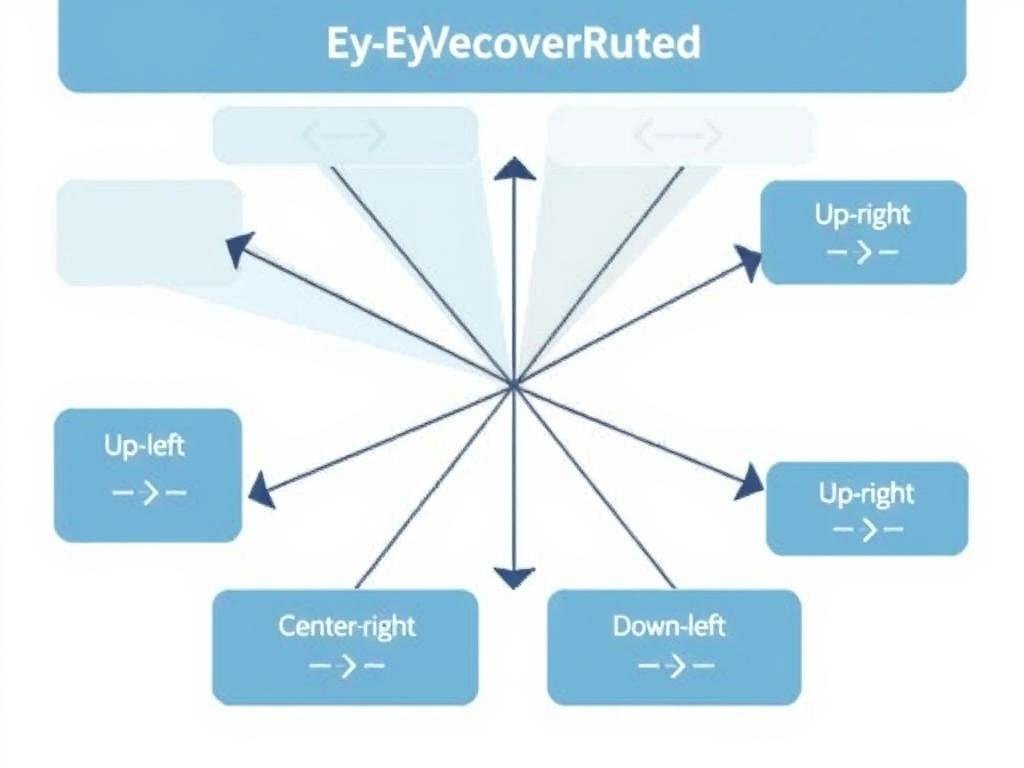The eyes have long been called the windows to the soul, but how much can they truly reveal about who we are? خواندن چشم, the practice of analyzing eye characteristics to determine personality traits, has fascinated humans across cultures for centuries. From the subtle shifts in pupil dilation to the intricate patterns in our irises, our eyes may communicate more about our inner selves than we realize.Modern science has begun to explore connections between eye features and personality, bringing new perspectives to ancient wisdom. This comprehensive guide explores whether خواندن چشم can genuinely reveal aspects of your character, examining both traditional practices and contemporary research.

Different eye features analyzed in خواندن چشم practice
علم پشت خواندن چشم
While skeptics may dismiss خواندن چشم as pseudoscience, emerging research suggests some eye characteristics may indeed correlate with personality traits. Understanding the biological basis helps separate fact from fiction in this fascinating field.
Neurological Connections Between Eyes and Personality
Our eyes are directly connected to our brain through the optic nerve, making them unique external indicators of neurological activity. The same neural pathways that influence personality also affect eye movement patterns, pupil responses, and even muscle development around the eyes.
Research from the University of Örebro in Sweden found correlations between specific eye movement patterns and personality traits like impulsivity and attention to detail. These connections provide a scientific foundation for some خواندن چشم principles.
Pupil Dilation Patterns and Emotional Responses
Our pupils involuntarily dilate in response to emotional stimuli, making them reliable indicators of interest, attraction, and emotional processing. This physiological response is controlled by the autonomic nervous system, which operates largely outside conscious control.
Studies have shown that individuals with certain personality traits show distinctive pupil response patterns. For example, those scoring higher in neuroticism often display more pronounced pupil dilation when viewing negative imagery.
Genetic Factors in Iris Formation and Personality
The intricate patterns in our irises are formed during fetal development and remain stable throughout life. These patterns are influenced by the same genetic factors that contribute to personality development, creating potential correlations between iris features and character traits.
Research published in the Journal of Personality found that certain iris characteristics correlate with specific personality dimensions from the Five-Factor Model. For instance, crypts (pits) in the iris showed correlation with openness to experience and agreeableness.
خواندن چشم Techniques Through History
The practice of analyzing eyes to understand personality has evolved across different cultures and time periods. From ancient civilizations to modern psychological approaches, خواندن چشم has a rich historical tapestry.
Ancient Practices in Eastern Traditions
In traditional Chinese medicine, practitioners have analyzed eye characteristics for thousands of years as part of overall health and personality assessment. The practice of iridology (analyzing iris patterns) originated in ancient China and later spread to other Asian cultures.
Ayurvedic medicine from India incorporated eye analysis to determine dominant doshas (constitutional types), believing that specific eye characteristics revealed fundamental personality traits and health tendencies.
Western Development of Iridology and Physiognomy
In 19th century Europe, Hungarian physician Ignatz von Peczely developed modern iridology after observing changes in an owl’s iris following injury. His work sparked interest in systematic iris analysis for both health and personality assessment.
Physiognomy, the assessment of character from physical features including eyes, gained popularity in Victorian England. Though later discredited as a science, it contributed techniques still used in modern خواندن چشم practices.
Modern Evolution and Scientific Approaches
Contemporary خواندن چشم has evolved to incorporate findings from psychology, neuroscience, and behavioral studies. Modern practitioners often combine traditional observations with scientifically validated correlations between eye characteristics and personality.
Eye-tracking technology has revolutionized the field, allowing researchers to precisely measure gaze patterns, fixation duration, and saccadic movements. These measurements have been correlated with personality traits in peer-reviewed studies, lending credibility to some aspects of خواندن چشم.
چگونه خواندن چشم Correlates with Personality Traits
Different eye features may reveal specific aspects of personality according to both traditional خواندن چشم practices and contemporary research. Understanding these correlations helps apply this knowledge in practical ways.
Iris Color and Pattern Analysis
The color and pattern of your iris may reveal fundamental personality tendencies. Research has found correlations between specific iris characteristics and personality traits from established psychological models.
| Iris Color/Pattern | Associated Personality Traits | Scientific Support Level |
| Blue with scattered crypts | Higher sensitivity, openness to experience | معتاد |
| Brown with dense fibers | Reliability, conscientiousness | Limited |
| Green with pronounced collarette | Creativity, balanced emotions | Anecdotal |
| Hazel with sectoral heterochromia | Adaptability, multifaceted personality | Limited |
| Gray with prominent rings | Analytical thinking, emotional control | Anecdotal |
Eye Movement Patterns and Cognitive Style
The way your eyes move when processing information, recalling memories, or experiencing emotions can reveal your cognitive style and personality tendencies. These patterns form the basis for some Neuro-Linguistic Programming (NLP) techniques.
Research has shown that individuals with specific personality traits tend to display characteristic eye movement patterns. For example, visually-oriented thinkers often look upward when accessing memories, while those who process information kinesthetically tend to look downward.
Micro-Expressions and Emotional Transparency
The subtle movements around your eyes—micro-expressions—can reveal emotions you may be trying to conceal. These involuntary expressions last for fractions of a second but can be detected by trained observers.
Research by psychologist Paul Ekman demonstrated that eye-related micro-expressions are among the most reliable indicators of genuine emotion. The ability to control these expressions varies based on personality traits like emotional regulation capacity and self-monitoring tendencies.
Discover Your Eye Pattern Type
Take our interactive assessment to learn what your unique eye characteristics might reveal about your personality. Get personalized insights based on scientific research and traditional خواندن چشم techniques.
Take the Assessment
کاربردهای عملی از خواندن چشم
Beyond theoretical interest, خواندن چشم has found applications in various fields, from psychology to business. Understanding how these techniques are applied provides context for their practical value.
Psychological Assessment and Therapy
Some psychologists incorporate eye analysis into their assessment protocols, using it as a complementary tool alongside standardized tests. Eye movement patterns can provide insights into cognitive processing and emotional responses that clients may not verbalize.
In therapy settings, practitioners may observe changes in clients’ eye characteristics over time as indicators of emotional processing and therapeutic progress. These observations can inform treatment approaches and help track subtle changes.
Business and Interpersonal Communication
In business contexts, understanding eye signals can enhance communication effectiveness and negotiation outcomes. Sales professionals and negotiators often receive training in reading eye cues to better understand client responses.
Human resources professionals may incorporate eye pattern analysis in interview processes, looking for congruence between verbal responses and eye signals. This can provide additional data points for assessing candidate suitability.
Personal Development and Self-Understanding
Many individuals explore خواندن چشم as a tool for self-discovery and personal growth. Understanding your own eye patterns can provide insights into your cognitive and emotional tendencies.
Self-analysis techniques based on خواندن چشم principles can help identify strengths and growth areas in your personality, complementing other self-assessment methods like personality inventories.
Limitations and Controversies in خواندن چشم
در حالی که خواندن چشم offers intriguing possibilities, it’s important to understand its limitations and the controversies surrounding its validity as an assessment method.
Scientific Criticisms and Validity Concerns
Many scientists criticize خواندن چشم for insufficient empirical validation. While some correlations between eye characteristics and personality have been documented, the strength and reliability of these connections remain questionable.
Confirmation bias presents a significant challenge in خواندن چشم practice. Practitioners may selectively notice eye features that confirm their preexisting impressions of an individual’s personality while overlooking contradictory indicators.
Strengths of Eye Reading
- Non-invasive observation method
- Some correlations supported by research
- Can complement other assessment approaches
- Accessible without special equipment
- Builds observation skills and empathy
Limitations of Eye Reading
- Limited scientific validation
- Susceptible to confirmation bias
- Correlations often weak or inconsistent
- Cultural and contextual factors often ignored
- Risk of overgeneralization and stereotyping
Cultural and Contextual Factors
Eye expressions and behaviors vary significantly across cultures, limiting the universal applicability of خواندن چشم techniques. What indicates one trait in one culture may signify something entirely different in another.
Environmental and situational factors can dramatically influence eye characteristics, making isolated observations potentially misleading. Factors like lighting, fatigue, medication, and emotional state can all affect eye appearance and behavior.
Ethical Considerations in Practice
The potential for misuse of خواندن چشم in making significant decisions about individuals raises ethical concerns. Using these techniques for hiring decisions, educational placement, or relationship assessments without other supporting data could lead to unfair judgments.
Privacy considerations also arise when analyzing someone’s eyes without their knowledge or consent. Ethical practitioners emphasize transparency about the limitations of خواندن چشم and obtain informed consent before conducting analyses.
شروع با خواندن چشم
If you’re interested in exploring خواندن چشم for yourself, there are several approaches to begin learning this fascinating practice while maintaining a balanced perspective.
Basic Observation Techniques
Begin by developing your observation skills, paying attention to the details of eye color, pattern, movement, and expression. Practice observing without immediately interpreting to build your ability to notice subtle features.
Use a mirror to study your own eyes or, with permission, observe friends and family members. Notice how eye characteristics change under different lighting conditions and emotional states.
Recommended Resources for Learning
Several books and online courses can provide structured learning paths for خواندن چشم beginners. Look for resources that balance traditional perspectives with scientific research for a well-rounded understanding.
Books on Eye Reading
- “The Secrets Our Eyes Reveal” by Dr. Helena Marti
- “Personality in the Eyes” by Robert Harding
- “The Science of Eye Communication” by Dr. Paul Jennings
- “Iridology Simplified” by Bernard Jensen
- “Eye Reading: Ancient Wisdom, Modern Science” by Sarah Chen
Online Learning Resources
- International Association of Eye Analysis (courses and certification)
- Eye Pattern Recognition Academy (video tutorials)
- Cognitive Eye Movement Studies (research database)
- Practical Eye Reading (interactive learning platform)
- Eye Psychology Institute (webinars and workshops)
Practicing with Ethical Awareness
رویکرد خواندن چشم with humility and ethical awareness, recognizing its limitations and potential for misinterpretation. Always obtain consent before analyzing someone’s eyes and be transparent about the speculative nature of some interpretations.
Combine خواندن چشم observations with other assessment methods rather than relying on it exclusively. This multi-method approach provides more balanced and reliable insights into personality.
سوالات متداول در مورد خواندن چشم
قوطی خواندن چشم accurately predict behavior?
در حالی که خواندن چشم may reveal tendencies and predispositions, it cannot accurately predict specific behaviors. Eye characteristics should be considered as potential indicators rather than deterministic factors. Many variables influence behavior beyond what eyes can reveal, including environment, experiences, and conscious choices.
چگونه است خواندن چشم different from iridology?
Iridology focuses primarily on analyzing iris patterns to assess physical health conditions, while خواندن چشم encompasses a broader analysis of eye characteristics (including movement patterns, micro-expressions, and pupil responses) to understand personality traits and cognitive tendencies. خواندن چشم incorporates elements of iridology but extends beyond its health-focused approach.
Can eye color change based on personality development?
Eye color is genetically determined and doesn’t change based on personality development. However, perception of eye color can vary with lighting, surrounding colors, and emotional states. The iris pattern remains relatively stable throughout life, though some subtle changes may occur due to aging or health conditions.
است ، خواندن چشم used in professional psychology?
Some psychologists incorporate elements of خواندن چشم, particularly eye movement analysis, as supplementary tools in their practice. However, it is not typically used as a primary diagnostic method in mainstream clinical psychology. Eye movement desensitization and reprocessing (EMDR) therapy does utilize directed eye movements, though for therapeutic rather than assessment purposes.
Can I learn خواندن چشم on my own?
اساسی خواندن چشم techniques can be self-taught through books, online courses, and practice. However, developing proficiency requires dedicated study, practice with feedback, and ideally some guidance from experienced practitioners. Self-learners should maintain a critical perspective and avoid overinterpreting observations without validation.
Conclusion: The Future of خواندن چشم
As science continues to explore the connections between our eyes and our inner selves, خواندن چشم stands at an interesting crossroads between ancient wisdom and modern research. While not a definitive science, it offers intriguing possibilities for understanding personality through one of our most expressive features.
The most balanced approach to خواندن چشم combines appreciation for its insights with awareness of its limitations. By viewing it as one tool among many for understanding human personality, we can extract value while avoiding overreliance on any single assessment method.
Whether you’re a skeptic or an enthusiast, exploring خواندن چشم can enhance your observation skills and deepen your appreciation for the complexity of human personality. The eyes may not tell us everything, but they certainly have fascinating stories to share for those willing to look closely.
Master the Art of خواندن چشم
Download our comprehensive guide to خواندن چشم techniques and start discovering what eyes reveal about personality. Includes practical exercises, scientific background, and ethical guidelines for responsible practice.
دانلود راهنمای رایگان

